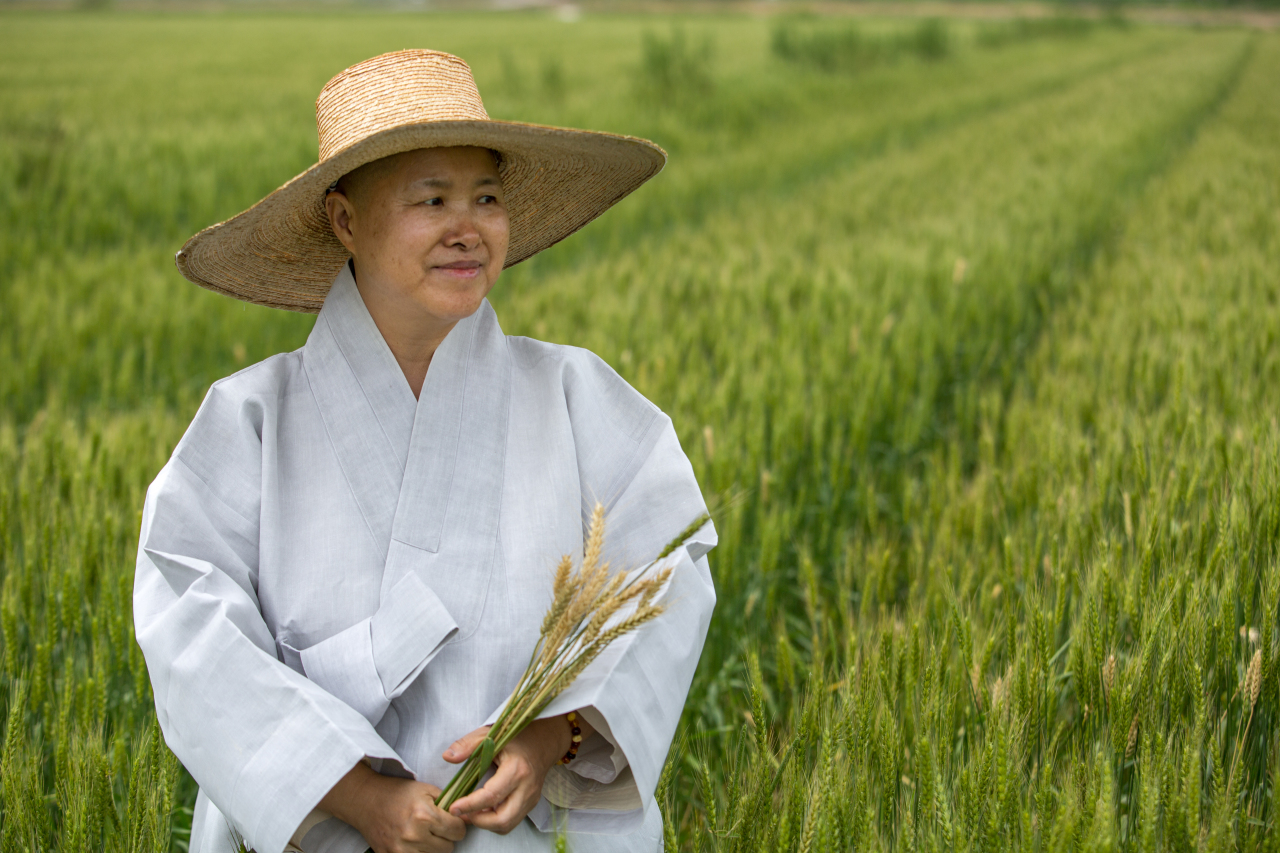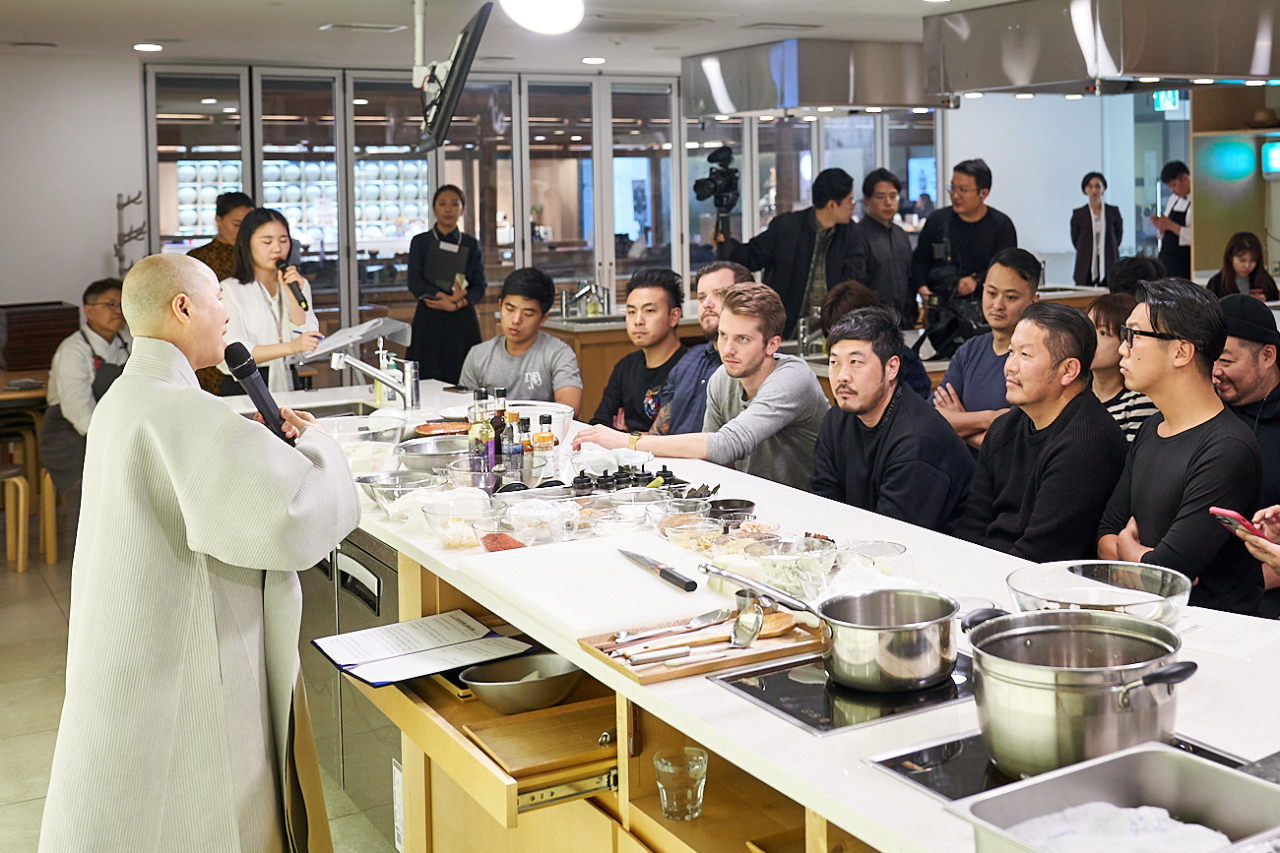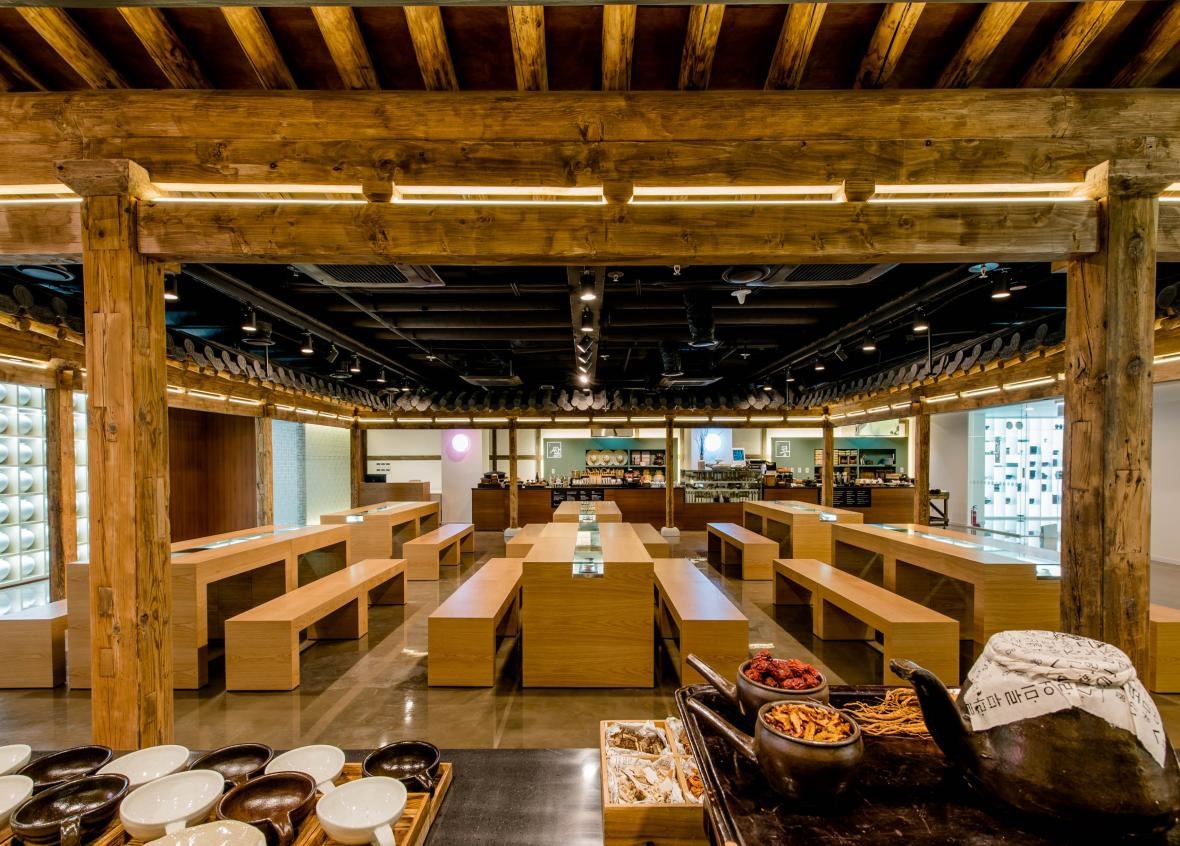[Eye] Wisdom in a dish
Ven. Sunjae hopes to share 5,000-year legacy of Korean food
By Im Eun-byelPublished : Feb. 21, 2020 - 09:30

While more people around the world are starting to appreciate Korean food -- or “hansik” in Korean -- a basic understanding of true Korean food is necessary for all Koreans, says the Ven. Sunjae, head of the Korean Food Promotion Institute.
Since April 2018, the Buddhist nun, known as a master of temple food, has been leading the state-funded institution.
“Some questioned why a Buddhist nun was appointed to the position. It is true that I joined the Buddhist order 40 years ago, and have been practicing temple food since then,” the Ven. Sunjae told The Korea Herald during an interview Monday at the Korean Cuisine Culture Center in central Seoul.
“But I do know what Korean food is, the hidden stories behind the dishes. My maternal and paternal grandmothers were court ladies before they left the palace as the Joseon kingdom underwent modernization,” she said. “I grew up experiencing all aspects of Korean food culture from court food to folk food.”
Though the institution is related to the culinary art of cuisine, a realm often considered part of culture, the organization is affiliated with the Ministry of Agriculture, Food and Rural Affairs.

“The KFPI is about promoting Korean food, encouraging the related businesses, improving the quality of life and contributing to the development of national economy,” the Ven. Sunjae explained.
“Korean food has 5,000 years of history behind it. The hidden wisdoms behind the food are endless,” the monk-chef said. “Do you know why we eat danpatjuk (sweet red bean porridge) on dongjinnal (winter solstice)?”
“It is because the red beans have warm energy. By eating the porridge, we can brace ourselves for the winter. The old stories tell us we eat red bean porridge to drive out ghosts. Our ancestors may not have grasped the exact science behind the red beans, but they passed down the wisdom,” she said.
The Ven. Sunjae was speaking from her own experience. Almost 30 years ago, the Ven. Sunjae was diagnosed with cirrhosis of the liver, and was told that she only had a year to live. She thought the illness came from her poor diet: She often skipped meals and consumed low-quality food as she did not have the time to eat properly.
Shocked by the diagnosis, the Ven. Sunjae completely changed her diet and started paying attention to what she ate under the mantra “you are what you eat.” She is now healthy and vibrant at the age of 64.
In her book “Sunjae Sunim’s Korean Temple Food” published in 2011, she wrote, “Honestly, I am not a smooth talker. But in front of food, my words find themselves. It is because I have learned food can be a source of life, able to cause and cure illnesses. As I know from my experience that food can shape health, personality, and life, stories flood into my mouth when I am in front of food.”
Since then, the Ven. Sunjae has been practicing temple food, writing books, sharing her knowledge through lectures, cooking classes and more. She travels around the world, introducing the true value of temple food.
But she insists that temple food is just one genre of Korean food. As the Korean Peninsula spreads from north to south, the vegetation is diverse, resulting in a rich diversity of culinary arts.

As head of the national food institution, the Buddhist nun hopes to enshrine the jang-making practice of Korea on UNESCO’s list of intangible cultural heritage of humanity, as one of the most important goals for the KFPI this year.
Jang, a Korean word that refers to sauces and pastes, is used to describe the likes of gochujang (red pepper paste), doenjang (soybean paste), ganjang (soy sauce) and more. The jang-making practice was designated as Korea’s Intangible Cultural Heritage in 2018.
“I would like to highlight the importance of kimchi and jang. In Western culture, people eat meat with wine to help digestion. In Korea, we marinate meat in gochujang or ganjang, as the fermentation enzymes are inside the sauces. Kimchi is the same. Packed with enzymes, kimchi helps digestion,” she said.
“Also, we should distinguish the varieties of ganjang. There are factory-made ganjang and artisan-made ganjang. They may be the same ganjang but are completely different,” she said, adding she only eats the ganjang she makes at home. “People should know how to make their own jang.”
The Ven. Sunjae also referred to the kimchi at her home as kimchi juice, saying she drinks the watery brine every day.
“Bulgogi (marinated beef) made with artisanal ganjang should be treated differently. Kalguksu, handmade noodle soup, made with artisanal ganjang should be appreciated,” she added.
In line with efforts to globalize Korean food, a law related to the promotion of Korean food was legislated last year that allows the Agriculture Ministry to recognize outstanding overseas Korean restaurants. The law will go into effect in August.
“We are to make decisions based on the number of Korean employees at the restaurants, the use of Korean ingredients, the quality of food, the hygiene of the kitchen and everything,” she said. According to a government estimate, there are around 30,000 Korean restaurants overseas.
“There are restaurants that deserve the encouragement, and there are those that don’t. The difference stems from the sincerity toward Korean food,” she said. “Some start their businesses without a proper understanding of Korean food.”
The law has a very broad definition of Korean food. It states that Korean food refers to food made by produce used in Korea or similar produce, prepared using recipes practiced in Korea or with similar methods. It also includes tangible or intangible resources, activities related to Korean food and the culinary culture itself.
“In other words, traditional Korean food, fusion Korean food, related content and businesses, and the Korean culture are all part of hansik,” she said.
Lately, the promotion of Korean food has taken an unexpected turn. Rather than signature Korean dishes like bibimbap and bulgogi, Korean-style barbecue and fried chicken have come into the spotlight overseas.
“Of course we have eaten chicken and beef, but we did not grill the beef on pans nor fry the chicken -- that is not traditional. But we should embrace modern culture, too. The question is how to make these more similar to authentic Korean food, that is what the KFPI should think about,” she said.
Another phenomenon related to Korea’s food culture is the “meokbang” (also spelled “mukbang”), which translates to “eating show,” referring to online shows where people typically eat large amounts of food.
“The meokbang videos can contribute to the promotion of Korean food for sure. But we should think about how the videos affect our culture. We have more food than ever before, but the young people are sick and unhealthy. The KFPI should work on guiding the pubic into establishing good eating habits,” the Ven. Sunjae said.
The Ven. Sunjae pointed out that today’s young people are neglecting the importance of their original food culture.
“People nowadays say, ‘What is the most local can be the most global.’ Even in the era of globalization, we should uphold the value of Korean food, because it is full of wisdom and it can be a way for others to look into Korean culture,” she said.
“We should have a basic understanding of hansik. It is great to know other cultures and everything, but still, as Koreans, we should understand what true Korean food is.”
By Im Eun-byel (silverstar@heraldcorp.com)









![[Kim Seong-kon] Democracy and the future of South Korea](http://res.heraldm.com/phpwas/restmb_idxmake.php?idx=644&simg=/content/image/2024/04/16/20240416050802_0.jpg&u=)








![[KH Explains] Hyundai's full hybrid edge to pay off amid slow transition to pure EVs](http://res.heraldm.com/phpwas/restmb_idxmake.php?idx=652&simg=/content/image/2024/04/18/20240418050645_0.jpg&u=20240418181020)

![[Today’s K-pop] Zico drops snippet of collaboration with Jennie](http://res.heraldm.com/phpwas/restmb_idxmake.php?idx=642&simg=/content/image/2024/04/18/20240418050702_0.jpg&u=)